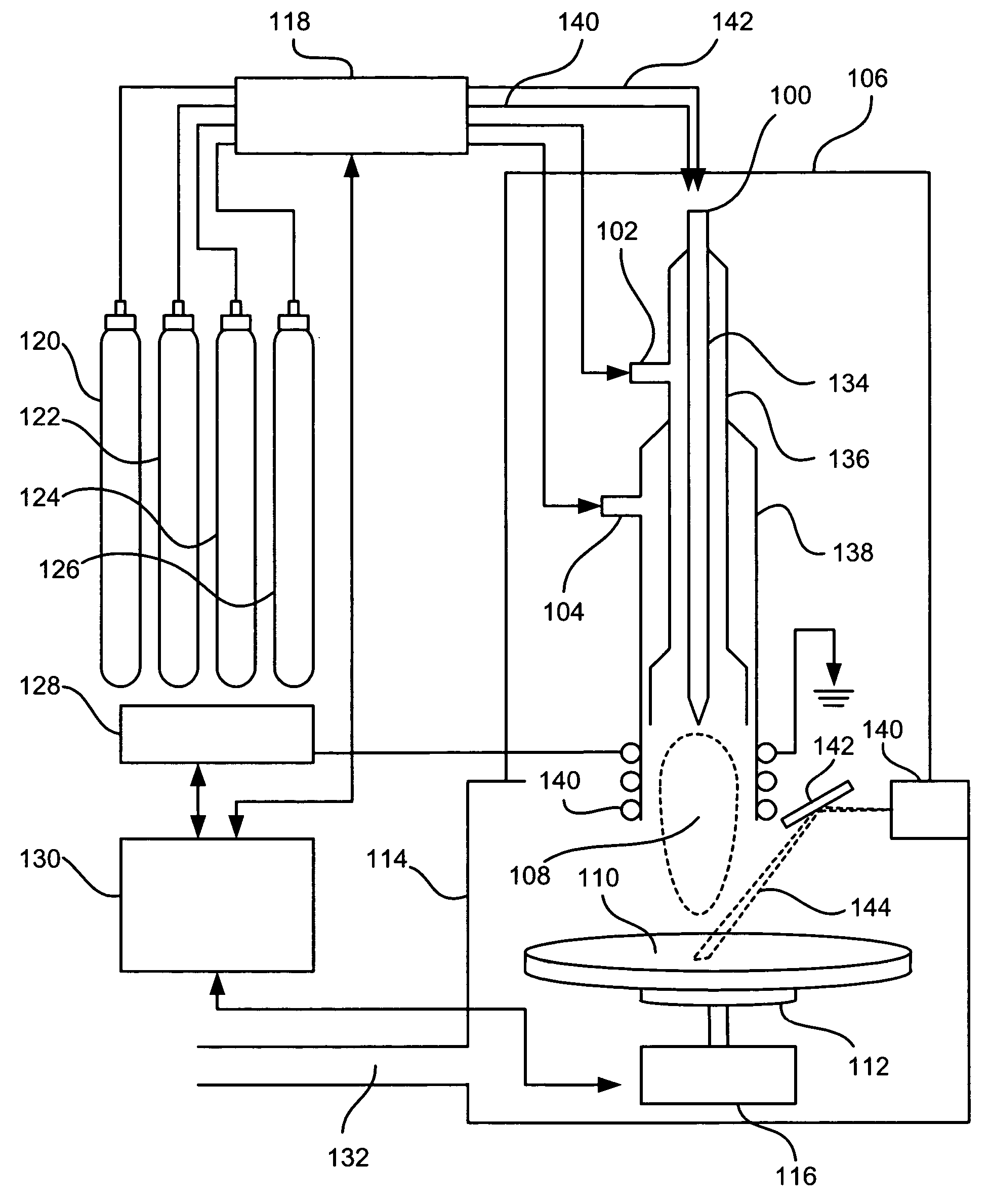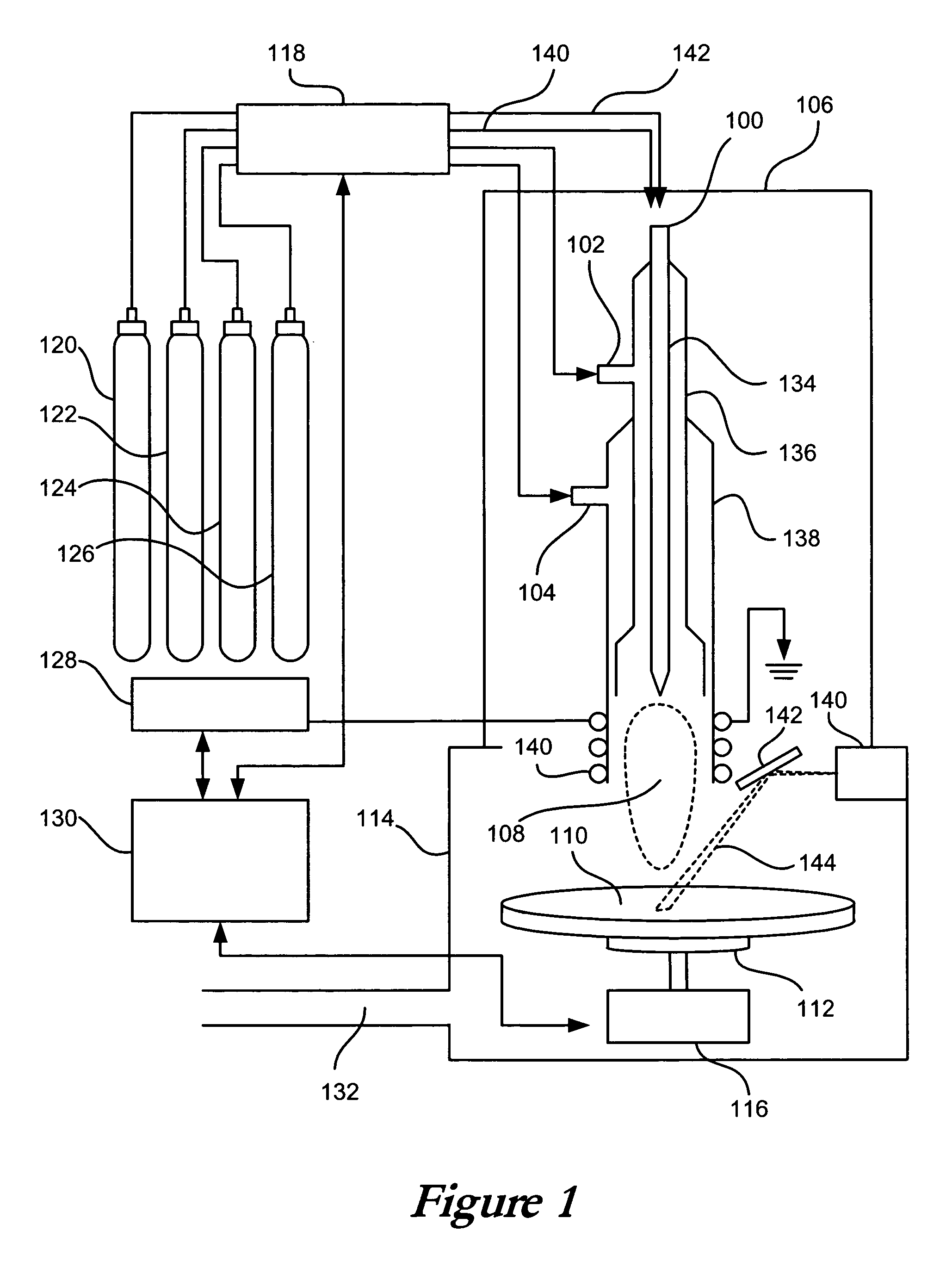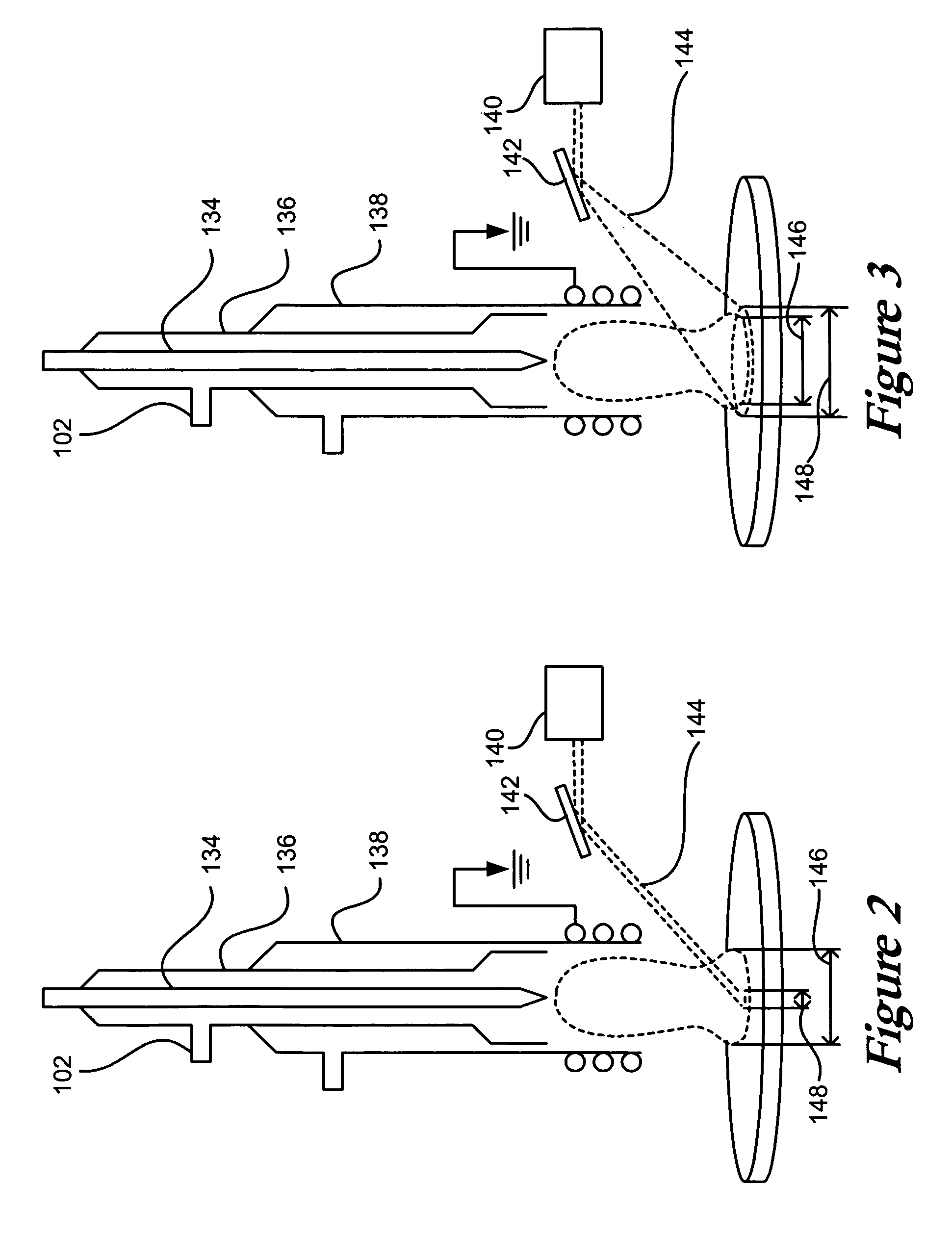Systems and methods for laser-assisted plasma processing
a laser-assisted plasma and processing system technology, applied in the field of selective removal of materials, can solve the problems of supplying enough heat to evenly heat an entire workpiece, affecting and presenting a number of formidable challenges to fabricators, etc., to achieve the effect of improving process quality, reducing the footprint and improving the quality of laser-assisted plasma
- Summary
- Abstract
- Description
- Claims
- Application Information
AI Technical Summary
Benefits of technology
Problems solved by technology
Method used
Image
Examples
Embodiment Construction
Systems and methods in accordance with embodiments of the present invention can circumvent problems associated with heating an entire workpiece to a specified temperature such that the workpiece can be etched using a sub-aperture tool. A heat source having a footprint that is smaller than the size of the workpiece, such as a laser, plasma, or flame can be used to heat a specific portion of the workpiece surface to a desired temperature. Such a process can provide many advantages, and can substantially improve the performance of a sub-aperture plasma-etching process. Applications for such a process can include, for example, any application where a high-aspect ratio hole needs to be created with a diameter that is less than that of a plasma footprint. Such applications can include, for example, applications requiring the drilling of human teeth, which cannot handle the thermal stress induced by lasers alone, and the generation of micro-holes to mark diamonds. The diameters of the res...
PUM
| Property | Measurement | Unit |
|---|---|---|
| mass flow | aaaaa | aaaaa |
| concentration | aaaaa | aaaaa |
| atmospheric pressure | aaaaa | aaaaa |
Abstract
Description
Claims
Application Information
 Login to View More
Login to View More - R&D
- Intellectual Property
- Life Sciences
- Materials
- Tech Scout
- Unparalleled Data Quality
- Higher Quality Content
- 60% Fewer Hallucinations
Browse by: Latest US Patents, China's latest patents, Technical Efficacy Thesaurus, Application Domain, Technology Topic, Popular Technical Reports.
© 2025 PatSnap. All rights reserved.Legal|Privacy policy|Modern Slavery Act Transparency Statement|Sitemap|About US| Contact US: help@patsnap.com



